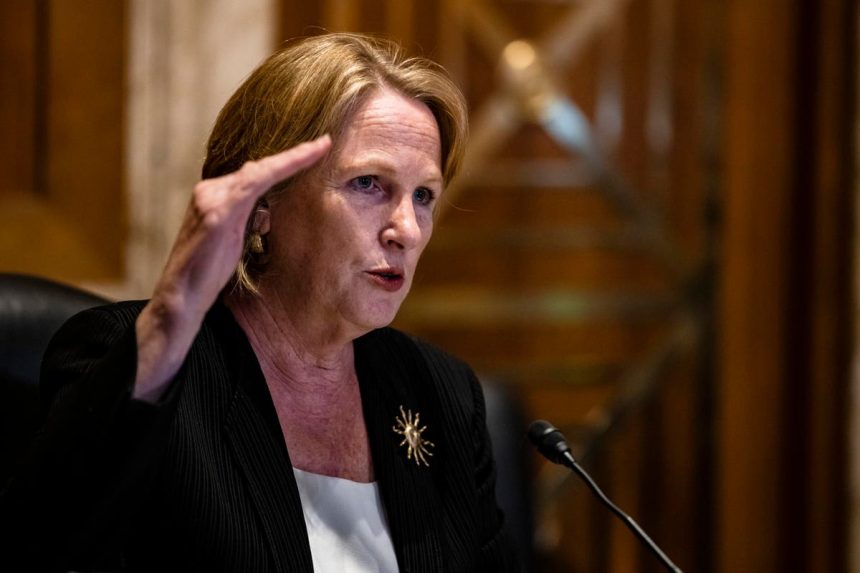“What a difference a year makes!” That’s how National Taxpayer Advocate (NTA) Erin M. Collins kicked off the preface to her midyear report to Congress.
That difference, Collins reported, was positive. She noted, “In submitting this report, I’m finally able to deliver some good news: The taxpayer experience vastly improved during the 2023 filing season.”
Specifically, Collins noted that the IRS caught up in processing paper-filed original Forms 1040 for individuals and various business returns, refunds were generally issued quickly, and taxpayers calling the IRS were much more likely to get through with substantially shorter wait times.
Collins also reported some challenges, including delays in processing amended tax returns and taxpayer correspondence. Those functions are intertwined—customer service representatives (CSRs) in the IRS’s Accounts Management (AM) function perform two roles: answering telephone calls and processing taxpayer correspondence and cases, including amended returns. CSRs can’t do both simultaneously, which means that when they were on phone duty, they weren’t processing amended returns or taxpayer correspondence—and vice versa.
Level of Service
The Treasury Department directed the IRS to achieve at least an 85% “Level of Service” (LOS) in answering telephone calls this filing season. They did that.
A little context is warranted: the LOS measure excludes 73% of the taxpayer calls the IRS received. That computation only includes calls directed to its AM telephone lines, excluding 7.2 million calls directed to compliance and other telephone lines, 8.5 million calls in which taxpayers hung up before being placed into a calling queue, and about 6.9 million calls routed to receive automated responses. The LOS measure reflects that telephone assistors answered 7.7 million out of 9.3 million taxpayer calls routed to them, not 11 million out of the 31.9 million calls the IRS received. Still, comparing apples to apples, LOS is up.
Assigning representatives to phone lines means they cannot perform other tasks—even when phones aren’t ringing. That means that during the time they were assigned to answer the phones, they were neither assisting taxpayers on the phone nor processing amended tax returns and taxpayer correspondence. So while the LOS rates were terrific, they resulted in more delays in processing paper correspondence.
Here’s how that translates into numbers. From December 2022 through the filing season, the inventory of amended tax returns more than doubled from 1.5 million to 3.4 million, and the inventory of taxpayer responses to IRS notices and other AM cases awaiting processing increased from 4.9 million to 5.0 million.
Collins reports that processing delays primarily involve paper-filed tax returns. During the pandemic, more than 90% of taxpayers e-filed their returns, and the IRS largely processed those e-filed returns without errors and issued refunds timely.
But since most taxpayers are e-filing, that means just a few returns aren’t getting processed, right? Not exactly. The IRS received 17 million paper-filed Forms 1040 in 2021, 14 million paper-filed Forms 1040 in 2022, and as of April 21, 2023, over five million paper-filed Forms 1040 in 2023. But the IRS isn’t yet scanning machine-read paper-filed returns, which means that IRS employees must still manually enter data from paper-filed returns into IRS systems.
The IRS is hopeful that will change. According to the NTA, the IRS is running pilot programs to test automating the processing of paper-filed tax returns. And there’s an ambitious timeline: the IRS aims to develop the capability to scan all paper-filed Forms 1040 by the 2024 filing season.
Amended Returns
Also causing a delay? Amended returns. Although the IRS accepts amended individual income tax returns (1040-X) electronically, it still relies on manual processing for these returns. This creates delays in both data intake and issuing refunds. As of the end of the filing season, the IRS was taking about seven months to process amended returns.
Employee Retention Credit (ERC)
On the business side, a large portion of the delay in processing amended returns is attributable to ERC claims. While most ERC claims are legitimate, a significant percentage are “along the spectrum of very aggressive to fraudulent.” As a result, ERC promoter claims involving the ERC are on the most recent IRS “Dirty Dozen” list of tax scams.
Currently, the ERC is claimed on Form 941-X, which is an amended payroll tax return. Corresponding Forms 941 must be processed before Forms 941-X can be processed. And as a result of fraud concerns, the processing of these claims has been relatively slow—especially since processing is only occurring at centers where employees are trained on Covid-related returns.
Taxpayer Correspondence and AM Cases
AM employees also process taxpayer responses to IRS notices and other taxpayer requests, like applications for Employer Identification Numbers (EINs), identity theft victim assistance cases, and tax return preparer authorizations. Since telephone service has been a priority, the IRS has not made much progress in reducing its paper AM inventories over the past year—the inventory is just 6% lower than at the same time last year. In April, it took the IRS 130 days to process its adjustments cases—better than the 214 days it took last year but well above the IRS’s standard processing time of 45 days.
Victims of identity theft have experienced particularly long delays. The average cycle time for identity theft victim assistance cases closed in April 2023 was 436 days, or nearly 15 months—three months longer than the 362-days to close in April 2022.
Technology
What’s the common theme in taxpayer challenges? Old tech. Here’s where Collins uses a lot of ifs:
- If the IRS had been using technology to automate the processing of paper-filed tax returns before the pandemic, processing delays and consequent refund delays would have been minimal.
- If the IRS had deployed sophisticated chatbots and better communications tools, far fewer taxpayers would have needed to call the IRS, making it easier for those who needed personal assistance to reach an employee.
- If all taxpayers had broadly functional online accounts, they could have obtained transcripts and most necessary information online without the need to call.
- If taxpayers could have downloaded notices and responded online, employees who were not permitted to come into the office due to COVID-19-related social distancing restrictions could have processed the responses from their telework locations.
Inflation Reduction Act (IRA)
Collins further points out that last August, Congress tried to fix some of these problems by giving the IRS about $79 billion over the next ten years as part of the Inflation Reduction Act of 2022. While Congress allocated much of the funds ($45.6 billion) to enforcement, it also provided $3.2 billion for taxpayer services, $4.8 billion for business systems modernization, and $25.3 billion for operations support. Most operations support dollars support taxpayer services and information technology (IT) modernization. (Some of that funding took a hit after the debt ceiling agreement.)
Will those dollars make a difference? Collins seems to think so. She notes that the IRS has already used nearly $1 billion of the IRA funding to hire more employees to process returns, answer calls, and process taxpayer correspondence. She writes, “The strong improvement in taxpayer services this filing season is mostly due to this increased staffing.”
To make substantial improvements over the longer term, Collins says the IRS must focus like a laser beam on IT. That includes:
- Giving taxpayers robust online accounts comparable to accounts provided by banks and other financial institutions;
- Making it possible for all taxpayers to e-file tax returns;
- Limiting the number of rejected e-filed returns;
- Providing faster relief for victims of identity theft;
- Making it possible for taxpayers to receive and submit responses to information requests electronically in all interactions with the agency;
- Digitizing all paper returns and correspondence upon receipt;
- Replacing discrete case management systems with an integrated, agency-wide system; and
- Completing the modernization of the IRS Individual Master File and Business Master File (repository for official taxpayer records, originally deployed in the 1960s).
The IRS has released a detailed Strategic Operating Plan (SOP) which explains how it hopes to spend the IRA funding. Collins believes the SOP could be a game changer for taxpayers and tax administration, but warns, “My main concern is with the large number of ambitious goals and projects described in the SOP.”
Collins writes that the IRS’s leadership will need to set priorities and provide focus to ensure the most critical projects are completed. She also says the agency should only tackles projects as it can reasonably handle.
TAS Objectives
As required by law, the report also identifies TAS’s key objectives for the upcoming fiscal year. The report describes 17 systemic advocacy objectives (what the TAS will advocate for with the IRS to improve tax administration on behalf of taxpayers and to address systemic issues causing taxpayer burden, harm, or negative impact on taxpayer rights), four case advocacy and other business objectives (activities TAS will pursue to advance advocacy efforts for individual taxpayers through their casework) and five research objectives (understanding how IRS procedures affect taxpayers and how taxpayers react to IRS actions).
Here are a few highlights:
- Protect taxpayer rights. The SOP proposes compliance initiatives to quickly resolve taxpayer issues and improve tax compliance, particularly among high-income taxpayers, large businesses and pass-through entities. TAS will evaluate the IRS’s implementation of the IRA SOP to maximize protection of taxpayer rights.
- Improve correspondence audit processes. The IRS conducts most of its audits by correspondence—not in-person. Taxpayers may have difficulty understanding the notices, gathering and providing documentation, and responding within deadlines. High no-response, unagreed, and correspondence audit default rates are particularly concerning for the TAS because a high percentage of the taxpayers subjected to correspondence audits have total positive incomes below $50,000. TAS will work with the IRS to improve taxpayer correspondence audit participation and agreement and default rates.
- Protect taxpayer privacy. Tax return preparers, including tax return preparation software providers, cannot use or disclose tax return information to third parties without taxpayer consent. There are concerns as to whether tax return preparation software providers shared tax return information with third parties without explicit taxpayer consent. TAS plans to evaluate how the IRS is protecting taxpayers’ right to confidentiality and preventing unlawful uses and disclosures of their tax return information.
- Implement systemic first-time penalty abatement but allow substitution of reasonable cause. The IRS allows a first-time abatement of penalties for failure to file, failure to pay and failure to deposit required tax if a taxpayer is otherwise compliant and has not used the abatement program within the prior three years. However, FTA is generally provided only if a taxpayer requests it. In 2021, the IRS granted relief to about 200,000 taxpayers, but there were about 4.3 million eligible taxpayers who did not receive it. The overwhelming majority of taxpayers do not know the IRS is willing to abate these penalties—and a systemic FTA would have granted them relief. The IRS also grants FTA before reasonable cause penalty relief—the TAS also believes taxpayers who qualify for reasonable cause penalty relief should not be forced to first use the FTA waiver. TAS will collaborate with IRS stakeholders to implement systemic FTA in conjunction with recharacterized reasonable cause relief.
Other objectives include reducing burdens on taxpayers applying for an Individual Taxpayer Identification Number (ITIN), improving IRS hiring, recruitment and training strategies and reducing compliance barriers for overseas taxpayers.
Overall, Collins offers up a hopeful note, “With adequate funding, leadership prioritization, and appropriate oversight from Congress, I believe the IRS will make considerable progress in the next three to five years in helping taxpayers comply with their tax obligations as painlessly as possible.”
About The Report
The report is one of two that the NTA delivers to Congress each year—one in January and another in June. The NTA leads the Taxpayer Advocate Service (TAS), and delivers the reports to the Senate Finance Committee and the House Ways and Means Committee. Since TAS is an independent organization within the IRS, there is no prior review or comment from the IRS Commissioner, the IRS Oversight Board, the Treasury Secretary or any other Treasury officer or employee or the Office of Management and Budget.
Read the full article here










